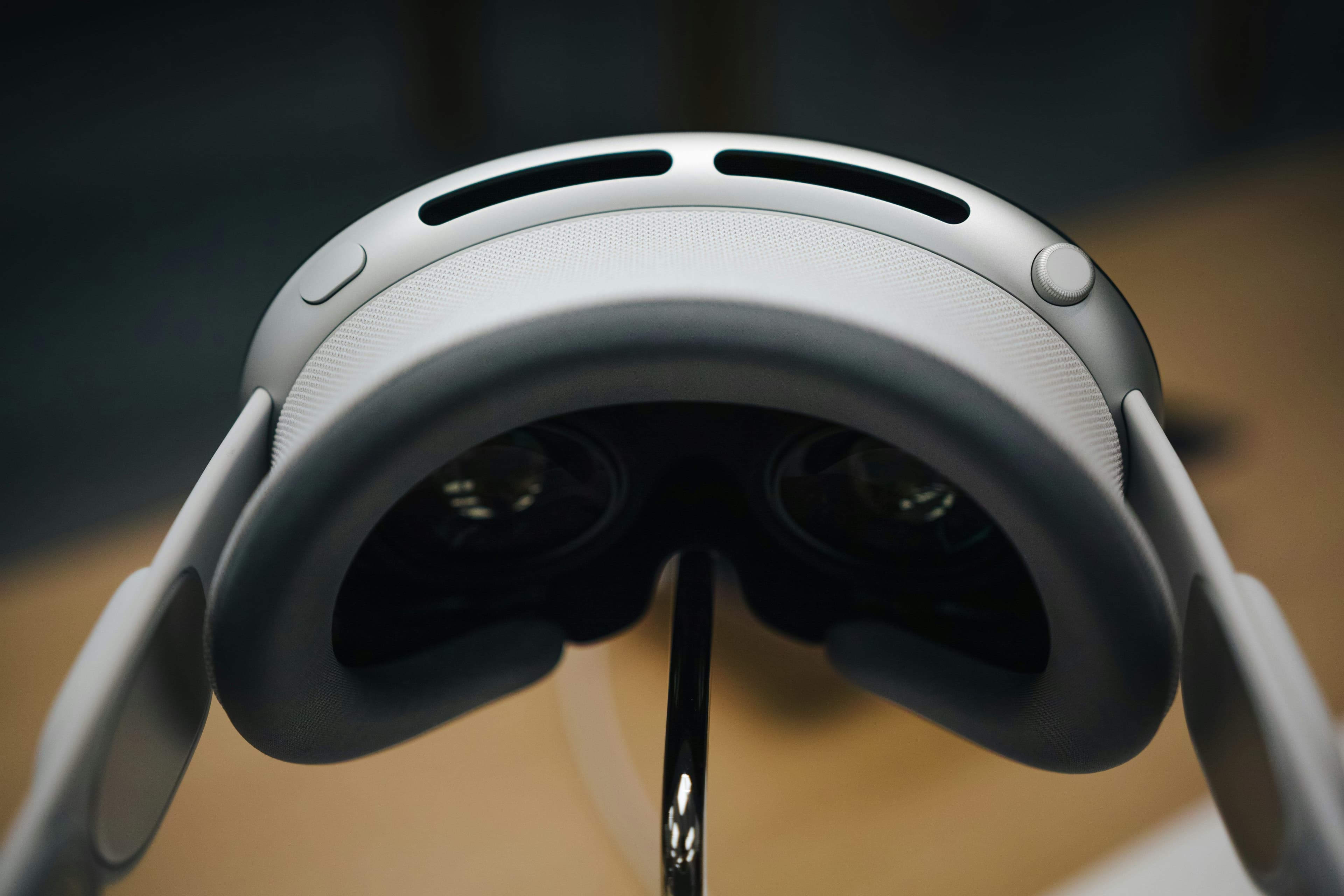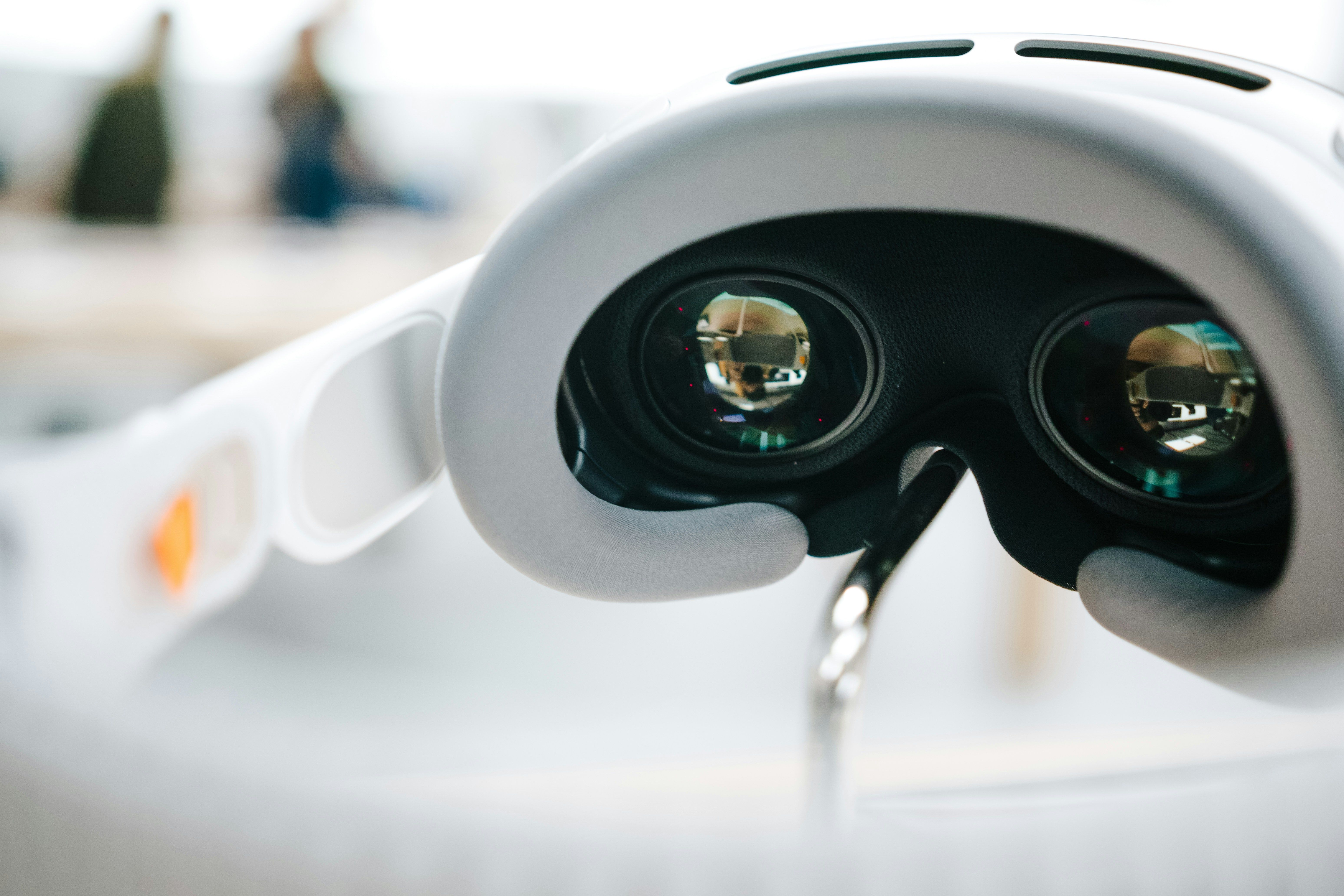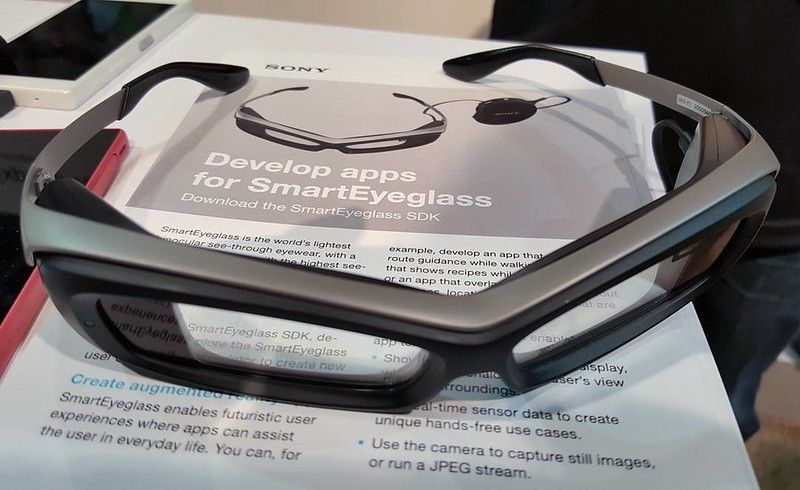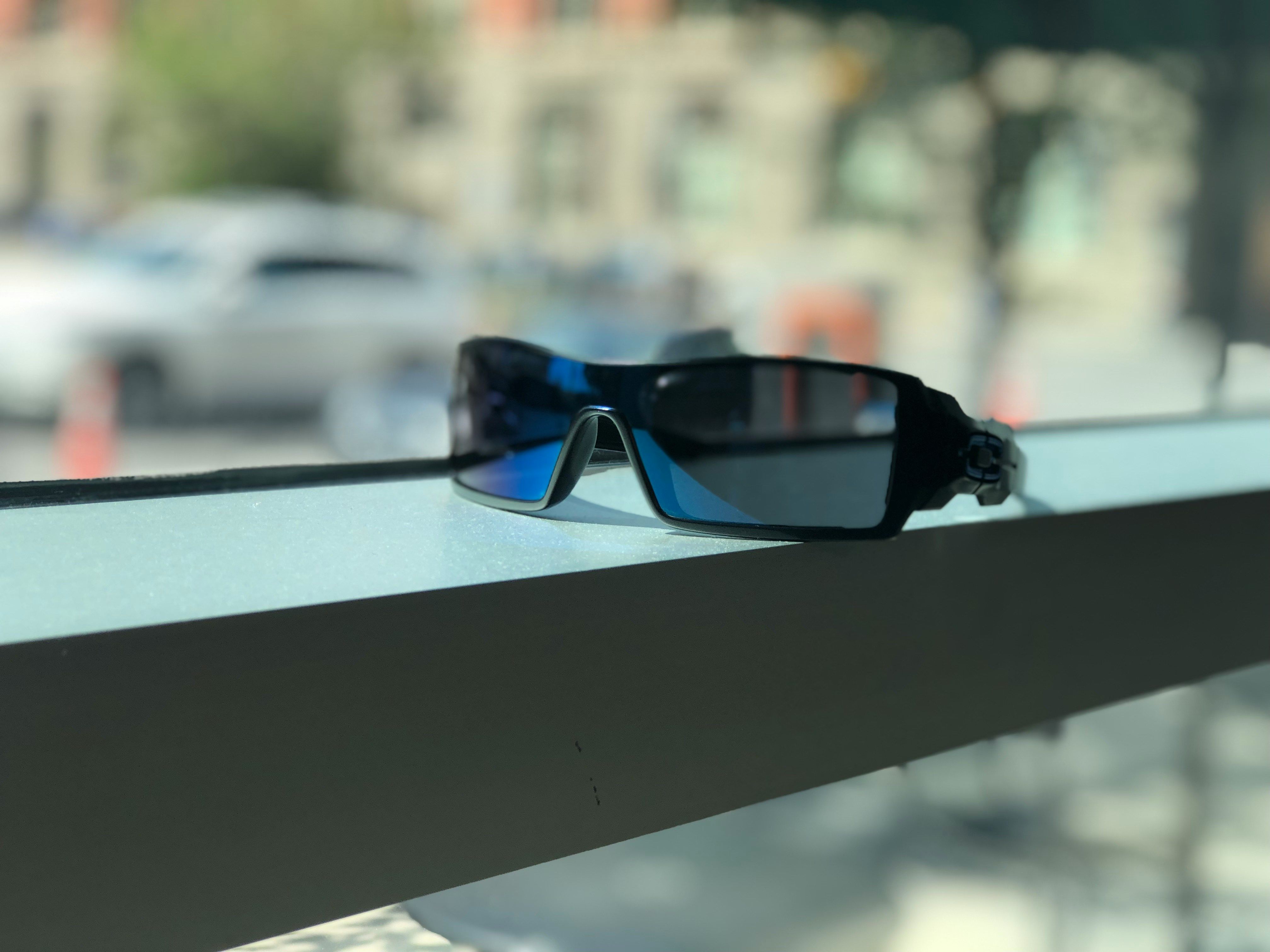Best AR Smart Glasses in 2024
Explore the top AR smart glasses for 2024 by different use cases.
Eddie
April 28, 2024

Augmented Reality (AR) smart glasses are rapidly transforming how we interact with the world and consume digital content. With advancements in technology, the year 2024 has brought an exciting lineup of AR smart glasses that cater to various needs, from entertainment and productivity to specialized professional uses. Whether you're an avid tech enthusiast, a professional looking for efficiency-enhancing tools, or simply curious about the latest in wearable tech, the array of AR smart glasses available today offers something for everyone.
Overview of AR Smart Glasses Market in 2024

General trends in AR smart glasses technology
As we progress into 2024, augmented reality (AR) smart glasses are becoming increasingly sophisticated and diverse in their applications, ranging from personal entertainment and media consumption to professional uses in various industries. The current trend leans heavily towards making AR glasses lighter, more comfortable, and more visually appealing, mimicking the design of traditional eyewear to encourage daily use and public adoption. Additionally, there is a strong emphasis on improving display technologies, battery life, and the integration of advanced artificial intelligence to enhance the interactivity and functionality of AR glasses.
Major advances and innovations in 2024
The year 2024 marks a pivotal stage in AR technology with significant innovations enhancing user interaction and immersion. One of the standout advancements includes the integration of dual 3D cameras on devices like the Xreal Air 2 Ultra, facilitating spatial computing and more accurate environment mapping. Additionally, the use of MicroLED optical waveguide displays, as seen in the RayNeo X2 Lite, represents a leap forward in reducing device bulkiness while providing sharp, bright visuals even in outdoor conditions. These innovations are setting the stage for AR glasses to transition from niche gadgets to essential tools for personal and professional use.

Best smart glasses for photos and videos: Ray-Ban Meta Smart Glasses
For those who prioritize capturing and sharing life's moments without breaking stride, the Ray-Ban Meta Smart Glasses offer an innovative solution. These glasses combine stylish design with practical technology, featuring a 12MP camera that captures high-quality photos and HD+ videos. Users can enjoy hands-free operation and live-streaming capabilities, making them ideal for social media enthusiasts and content creators who value spontaneity and quality.
Best display smart glasses for iPhone users: Viture One
iPhone users looking for an immersive display experience will find the Viture One glasses to be a superb companion. These smart glasses offer an iOS-compatible app that transforms your phone into a multi-window desktop interface, enhancing productivity and entertainment on the go. With features like electrochromic dimming and a 43-degree field of view, the Viture One stands out as a leading choice for its compatibility with Apple products, providing seamless integration and impressive visual clarity.
Best smart glasses for Samsung and Android: Xreal Air 2
Android users, particularly those wielding Samsung devices, will appreciate the Xreal Air 2 for its tailored user experience. These glasses feature the lightest design available on the market and support multi-screen apps for Android, macOS, and Windows, offering versatility across different operating systems. The Nebula app enhances functionality by allowing multiple virtual screen viewing, making the Xreal Air 2 an ideal option for those looking to boost productivity or enjoy multimedia content through a connected ecosystem of devices.
Noteworthy Features of Top AR Smart Glasses

Display quality and field of view
The quality of display and the field of view (FOV) are crucial factors in choosing AR smart glasses. High-resolution displays provide clearer images, which enhance the user's experience, particularly when viewing multimedia content or detailed visual data. For instance, the RayNeo Air 2, Xreal Air 2, and Rokid Max are noted for their bright displays with 600 nits of brightness and FOVs ranging from 46 to 50 degrees, which is comparable to looking at a large screen TV from a standard living room distance.
Smart features and AI integration
The integration of AI and smart features in AR glasses has greatly expanded their usability and functionality. Features such as voice control, AI-based visual recognition, and smart notifications are becoming standard. The Ray-Ban Meta Smart Glasses, for instance, highlights AI integration with a chatbot that provides quick responses to user queries. Solos AirGo 3 incorporates ChatGPT for real-time translation in 25 languages and creative assistance, making it extremely valuable for travelers.
Compatibility and comfort considerations
For frequent or long-duration use, the comfort and compatibility of AR smart glasses are essential. Lighter glasses, such as the Xreal Air 2, which weigh only 2.5 ounces, are favored for extended use. Compatibility with existing devices and operating systems, such as iOS and Android, ensures a seamless user experience. The Viture One and Xreal Air 2 stand out for their compatibility across different platforms, including macOS and Windows, and their ability to connect via USB-C Alt mode for easy screen mirroring.
Best Budget-Friendly AR Smart Glasses

Affordable AR Smart Glasses For Casual Users
When it comes to budget-friendly AR smart glasses, there are several options that provide good functionality at a lower price point. Amazon Echo Frames offer a cost-effective entry into smart glasses, especially for users embedded within the Amazon ecosystem, priced at around $270. Another example is the Solos AirGo 3, starting at $199, which includes AI capabilities like ChatGPT and language translation, suitable for casual users and travelers.
Comparison of Features Versus Cost
Budget AR glasses typically offer fewer high-end features but still provide significant value depending on user needs. For example, the Echo Frames focus on audio and Alexa integration without display capabilities, which is suitable for users who need smart assistance without the complexity of a visual display. On the other hand, Solos AirGo 3, while inexpensive, includes essential AI features useful in everyday scenarios, particularly in communication-heavy contexts. The balance between cost and features is crucial in determining the best budget-friendly AR smart glasses, where users must weigh what features are most important against the available budget.
Predictions for Future AR Smart Glasses Developments

Anticipated technological advancements
As AR smart glasses continue to evolve, significant technological enhancements are expected by 2024. Advancements will likely center around improving display technologies, with a clear trend towards integrating more vibrant and crisp MicroLED displays, as hinted by developments seen at CES 2024. These displays provide not only higher brightness but also enhance energy efficiency, allowing for prolonged usage without substantial power drain.
The use of waveguide optics is also anticipated to grow, replacing traditional prisms to reduce the bulkiness of AR glasses, thereby making them more comfortable and stylish for everyday wear. This shift may be complemented by increased field of view (FOV) and higher resolution capabilities, making the digital overlay in the user's vision much more immersive and detailed.
Battery life and processing power are other areas ripe for improvement. Future AR glasses are expected to feature more advanced, power-efficient chips that support sophisticated AI applications in a standalone format without the need for tethering to a smartphone or PC. This independence from other devices will enhance user mobility and open up new applications in sports, remote assistance, and immersive learning.
Enhanced connectivity features such as 5G could bolster real-time data sharing and cloud integrations, allowing AR glasses to deliver real-time insights and augmentations with minimal latency, improving their utility in professional and everyday settings.
Potential new market entrants and innovations
The landscape of AR smart glasses is poised for diversification as new players are likely to enter the market, drawing from breakthroughs in adjacent technologies. Companies historically rooted in consumer electronics or eyewear may pivot towards AR solutions, offering fresh designs or unique integrations with existing product ecosystems.
Innovations could particularly emerge in how AR glasses integrate with other wearables and IoT devices, offering more cohesive and intuitive user experiences. For instance, there could be increased compatibility with smart watches and fitness trackers, allowing users to receive health metrics directly in their line of sight, or integration with smart home devices to control the environment through voice commands or gestures perceived by the glasses.
As AI continues to dominate tech advancements, AR glasses will likely embrace more sophisticated machine learning algorithms to provide contextually aware content. This could manifest as advanced facial recognition for social media applications, real-time translation overlays during conversations, or dynamic adjustment of display settings based on environmental readings.
Furthermore, a significant innovation could arise from AR glasses designed with specialized use cases in mind, such as models tailored for specific professional fields like architecture or design, offering tools and features that enhance job-specific tasks and workflows. This specialization may help overcome current one-size-fits-all limitations, propelling wider adoption across varied industries.


